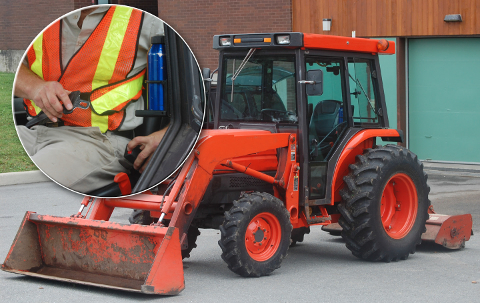After finishing a job on a worksite, an equipment operator was returning an industrial lift truck (forklift) to its base approximately 18 km away. The forklift was licensed for use on the road. The driver lost control of the forklift which then went off the road and toppled down a steep bank. The driver, who was not wearing a seatbelt, was thrown from the forklift and killed when it rolled on top of him.
A heavy equipment operator and co-worker were backfilling a site after fixing a water main. The operator climbed onto a vibrator compactor and began to move forward on uneven ground. The operator was thrown from the unit when it flipped over on a slope. He suffered fatal chest injuries when he was pinned beneath the compactor’s ROPS. He was not wearing a seatbelt.
These fatalities could have been prevented with the use of a seatbelt. A worker who isn’t buckled in can be thrown from the cab. Other protective measures, such as ROPS, are ineffective when not used in conjunction with a seatbelt. The machine, and even the ROPS itself, can crush you as it rolls. Workers sometimes think they will be able to jump to safety if their vehicle starts to tip over. Unfortunately, this is seldom the case.
The best measure workers can take to avoid injury or death in the event of a rollover or a collision is to wear their seatbelt. In the event of a rollover, the ROPS will act as a protective box around you, and the seatbelt keeps you inside the box.
Recommended preventative action
- Ensure operators always wear seatbelts.
- Ensure operators are properly trained in the use of equipment.
- Ensure all motorized vehicles are equipped with ROPS, where required.
- Enforce all safety regulations as required by the OHS Act.


